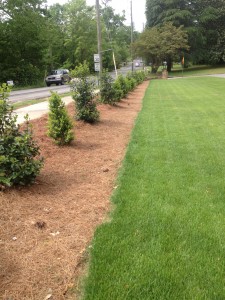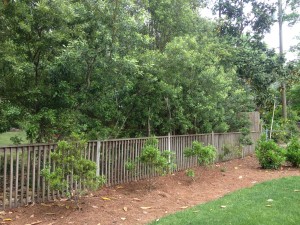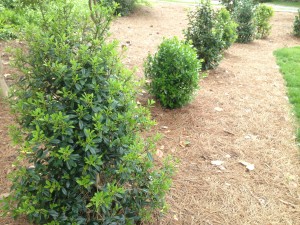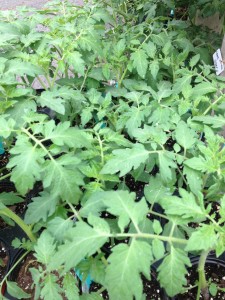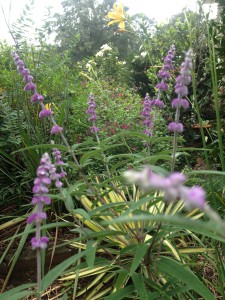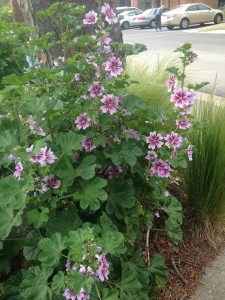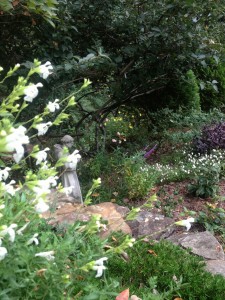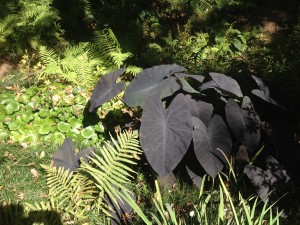Gomphrena, zinnias, red cuphea, mexican heather, vinca…have you tried one or more of these in your garden or planters? If you haven’t, you should!
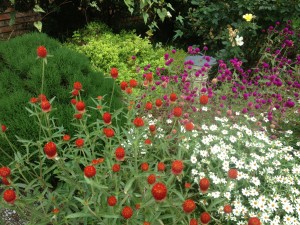
Gomphrena & narrow leaf zinnias in a hot, sunny bed
Gomphrena is one that you might not look at twice in its little pot on a table at a nursery…but it is one of the toughest plants – and the prettiest, come the dog days of August. In fact, the heat seems to bring on more blooms, and the more sun the better. It is more difficult to find, but we have gotten some in recently. The taller varieties are particularly nice in the garden, and they come in purple, red and sometimes pink and white. If you have a tough, hard to deal with spot in your garden, gomphrena is one to try.
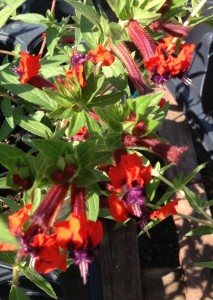
bat face cuphea
Red cuphea, or batface cuphea, is another underused but tough plant for our summer heat. If you’ve ever noticed the bright red blooms in our sign planter at the shop in the middle of summer, you’ve seen bat face cuphea in all its glory. While butterflies flutter and land on the gomphrena, you’ll see the hummingbirds feeding on the cuphea – they love it! With its trailing habit, it works quite well in planters.
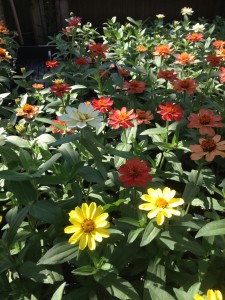
Profusion zinnias
Zinnias are another go-to flower that can’t be beat – the best for disease resistance (no ugly leaves) are the narrow leaf zinnias, the Profusion and Zahara zinnias. You’ll find narrowleaf zinnias in yellow, white, orange and a mix of these three colors. Both Profusion and Zahara types have larger bloom and come in some pink colors too.
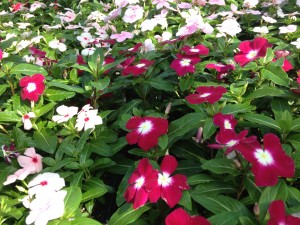
Finally, vinca is one of the most drought tolerant and forgiving plants out there…in fact, overwatering is the main culprit if plants don’t make it – how great is that? The clear, pretty colors of vinca and both upright and trailing habits make them the perfect candidate for beds and planters alike.
So, it’s the middle of summer and you say you need a little color? These are the annuals that can take the heat!

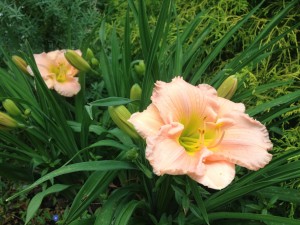 This ‘Siloam Double Classic’ daylily’s first bloom in my garden marks the beginning of summer for me. Blooming right around Memorial Day, it is also a reliable rebloomer and the last to bloom at the end of summer – August 22nd last year, to be exact!
This ‘Siloam Double Classic’ daylily’s first bloom in my garden marks the beginning of summer for me. Blooming right around Memorial Day, it is also a reliable rebloomer and the last to bloom at the end of summer – August 22nd last year, to be exact!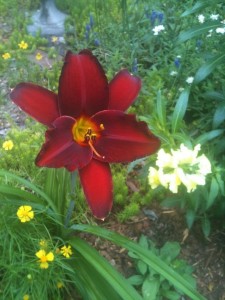
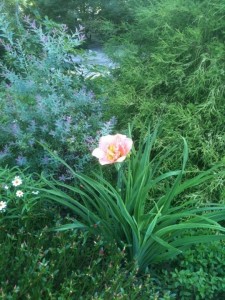 Once the bloom period ends, cut the old bloomscapes completely to the ground, tidying the plant. If the leaves begin to look tattered at all, don’t hesitate to take the entire plant and cut all the foliage back by half. Your daylilies will reward you with fresh foliage the rest of the season, and, if they’re rebloomers, you’ll have another round of flowers!
Once the bloom period ends, cut the old bloomscapes completely to the ground, tidying the plant. If the leaves begin to look tattered at all, don’t hesitate to take the entire plant and cut all the foliage back by half. Your daylilies will reward you with fresh foliage the rest of the season, and, if they’re rebloomers, you’ll have another round of flowers!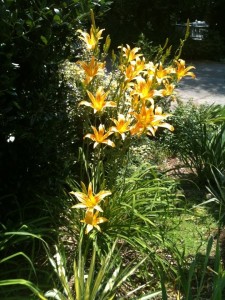
 Owners Frank and Pardis Stitt prefer white and green for the front of this French cafe, located next to their acclaimed restaurant Highlands in downtown Birmingham. These are fairly large, tan colored cast stone planters with nice clean lines. A mix of contrasting green and variegated foliage with a touch of white add light to this shady spot, and the stone wall adds a pleasing backdrop to the planting.
Owners Frank and Pardis Stitt prefer white and green for the front of this French cafe, located next to their acclaimed restaurant Highlands in downtown Birmingham. These are fairly large, tan colored cast stone planters with nice clean lines. A mix of contrasting green and variegated foliage with a touch of white add light to this shady spot, and the stone wall adds a pleasing backdrop to the planting.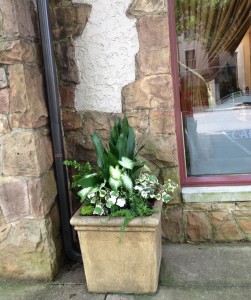
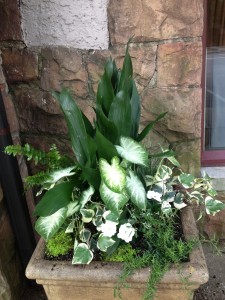
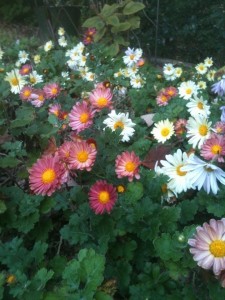
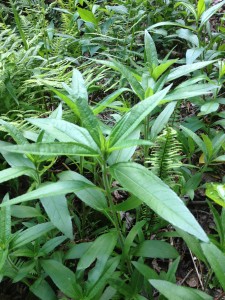
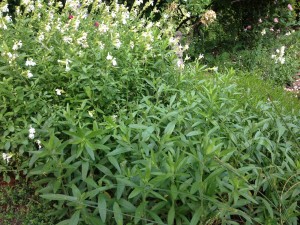
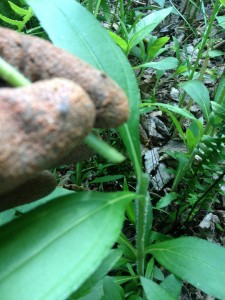
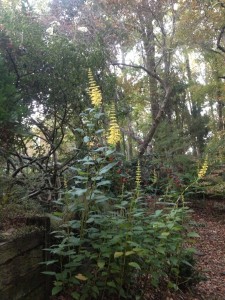
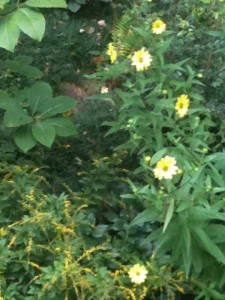
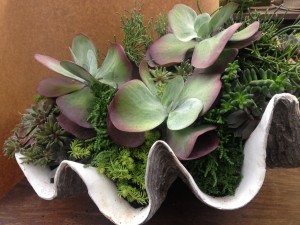
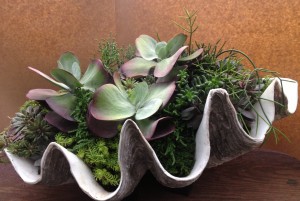 WOW! A customer brought this in the other day and I was the lucky one that got to plant it up! This clam shell is the real deal…a beautiful, large piece of natural art that had found its way to us.
WOW! A customer brought this in the other day and I was the lucky one that got to plant it up! This clam shell is the real deal…a beautiful, large piece of natural art that had found its way to us.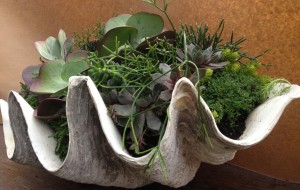
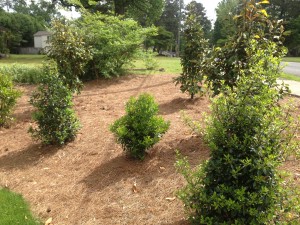 Some of you may know that the owner of Oak Street Garden Shop, Billy Angell, recently moved into a new house on Euclid Avenue – quite visible to all of you who live in the area! Coming from his old house at which he’d created an extensive woodland, cutting, vegetable, and herb garden was quite a drastic change. This yard is nice and flat, but that was pretty much it. Now, if you know Billy, you also know that a nice, flat yard is one thing, but he needs a few plants out there too!
Some of you may know that the owner of Oak Street Garden Shop, Billy Angell, recently moved into a new house on Euclid Avenue – quite visible to all of you who live in the area! Coming from his old house at which he’d created an extensive woodland, cutting, vegetable, and herb garden was quite a drastic change. This yard is nice and flat, but that was pretty much it. Now, if you know Billy, you also know that a nice, flat yard is one thing, but he needs a few plants out there too!